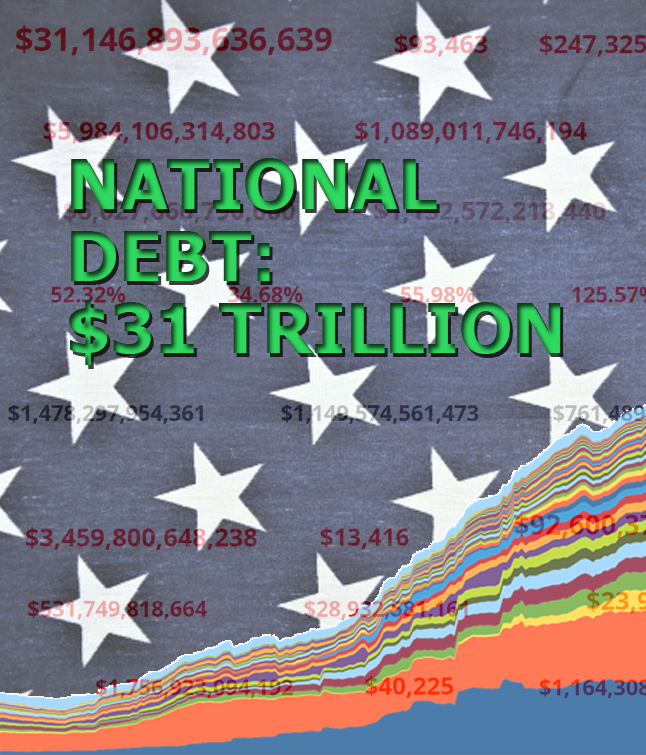Author: David Dawson
The United States’ national debt is now over $31 trillion for the first time in history. When you think about it, that number is staggering.
It’s hard to even imagine that much money, let alone the fact that it’s growing by the day.
According to data released on October 3, overall America’s national debt reached $31 trillion for the first time. President Joe Biden has made a substantial contribution to its growth by following the path of his predecessors.
How Much Is the U.S. National Debt?
According to the latest figures from the U.S. Treasury Department, as of September 30, 2019, the total public debt was $31.05 trillion. That’s a lot of money!
The national debt is the total amount of money that the U.S. government owes to its creditors. It’s made up of two components: debt held by the public and intragovernmental holdings.
Debt held by the public is money that’s been borrowed from individuals, corporations, and foreign governments. Intragovernmental holdings are loans that one part of the government has made to another arm of government.
What Is the History of the U.S. National Debt?
You may be wondering how we got here. How the U.S. National Debt could reach $31 trillion?
Well, it’s a long story. The roots of the debt go all the way back to the 1700s when the country was young and starting out. Back then, it was mostly owed to foreign governments and investors. Fast-forward a few hundred years, and the debt has only grown larger and more complex.
There are a lot of factors that have contributed to this, including costly wars, economic recession, and tax cuts for the wealthy. But the bottom line is that the U.S. National Debt is now more than $5 trillion higher than it was just 10 years ago.
That’s a sobering thought, isn’t it?
How the U.S. National Debt Got So High
According to the Treasury Department, America has had a national debt since its foundation when it took out loans to fund the American Revolution.
The national debt encompasses debt held by the government and intragovernmental assets.
The national debt has been rising consistently over the past few decades, but it has risen more during foreign wars and domestic crises, such as the COVID-19 epidemic, the Great Recession, and the wars in Afghanistan and Iraq.
According to the Treasury Department, fiscal policy initiatives like tax cuts and stimulus plans may significantly increase the debt.
The government went on a borrowing binge to support the country’s economy as the devastating COVID-19 virus upended lives, the labor market, and the supply system.
Since the start of 2020, the amount of outstanding debt has increased by almost $8 trillion in just 8 months. And it has increased by $1 trillion.
The money was borrowed during the Trump and early Biden administrations when interest rates were at an all-time low. Borrowing costs are much higher right now due to historically high inflation and a string of sharp interest rate increases by the Federal Reserve in an effort to rein in rising prices.
According to an assessment made by the Committee for a Responsible Fiscal Budget last month, President Joe Biden’s policies could increase deficits by $4.8 trillion between 2021 and 2031.
How Does the U.S. National Debt Impact the Economy?
The U.S. National Debt is a huge number, and it keeps getting bigger. The current outstanding debt is over $31 trillion. So what does that mean for the economy?
Well, as the debt grows, it becomes harder and harder for the government to borrow money.
In fact, the government has to pay more interest on its loans, which means that taxpayers have to pay more in taxes.
The government also has to spend more money on interest payments, which reduces funds that could be put towards infrastructure and defense.
Final Remarks
You read that right – the U.S. National Debt has topped $31 trillion for the first time in history. That’s more than the GDP of countries like Mexico and Italy.
So what does this mean for the average American? $31 trillion is a lot of money, and it’s only going to continue to grow. This is a huge problem, and which might get worse if something isn’t done soon. The average American is going to feel the effects of this debt in a lot of ways, from increasing taxes to cuts in social programs. Hopefully, the government finds a solution soon.

